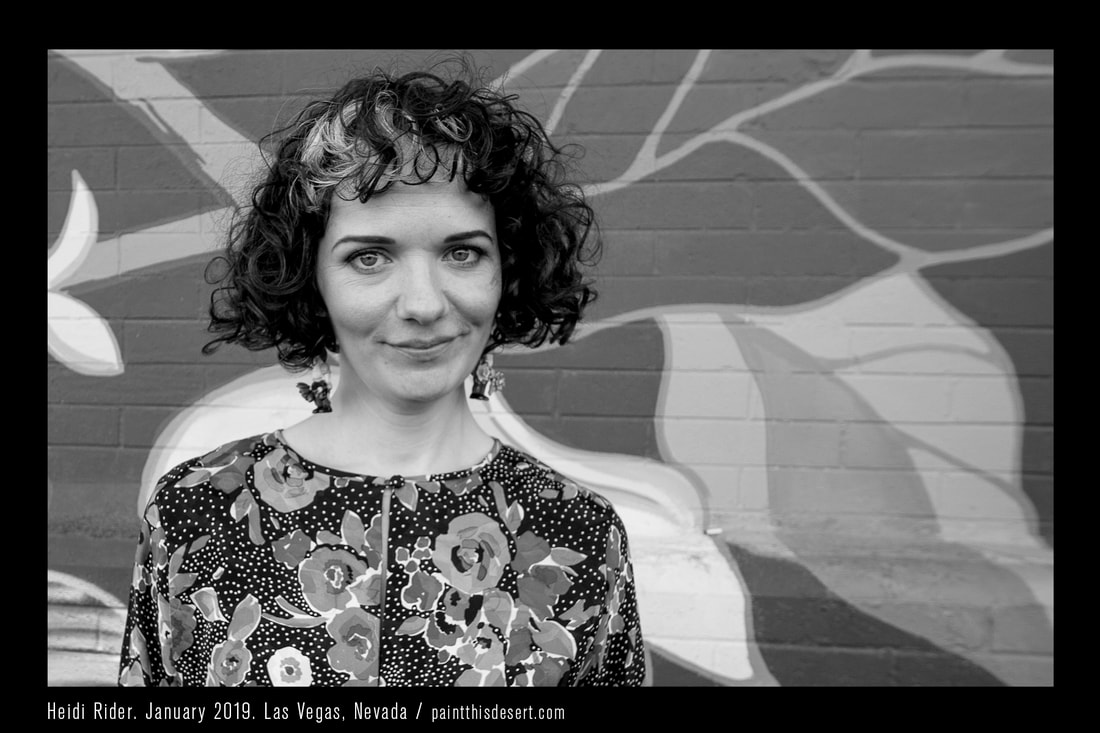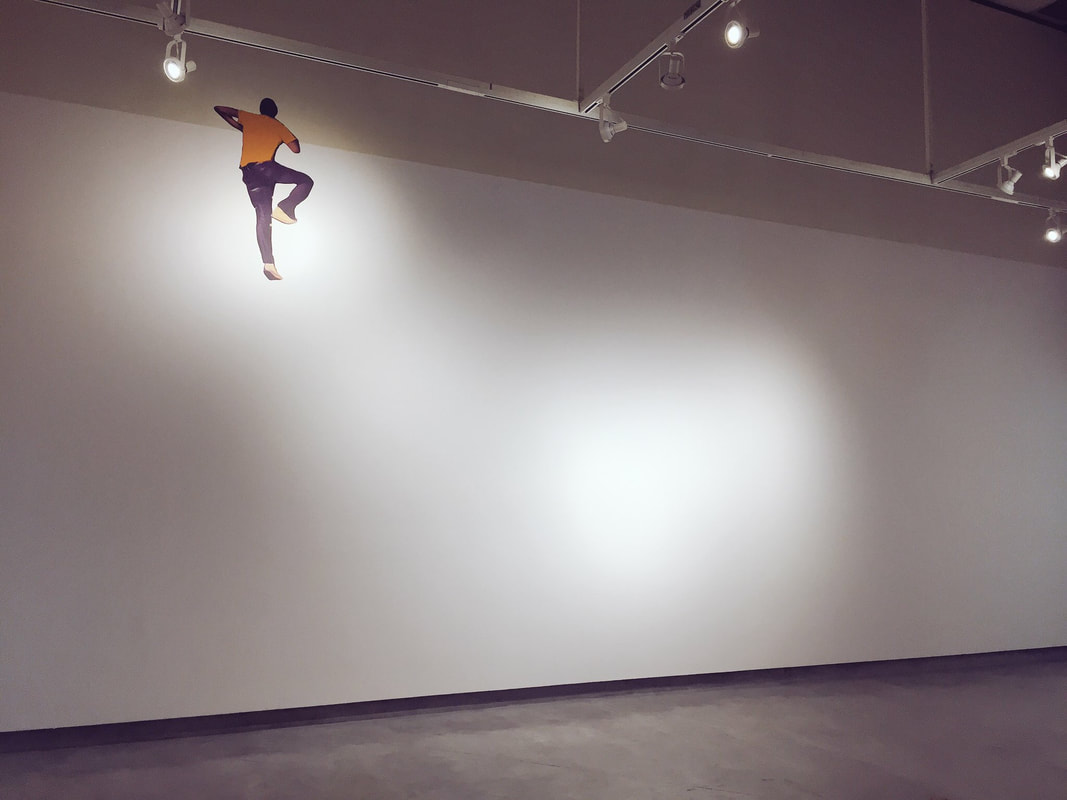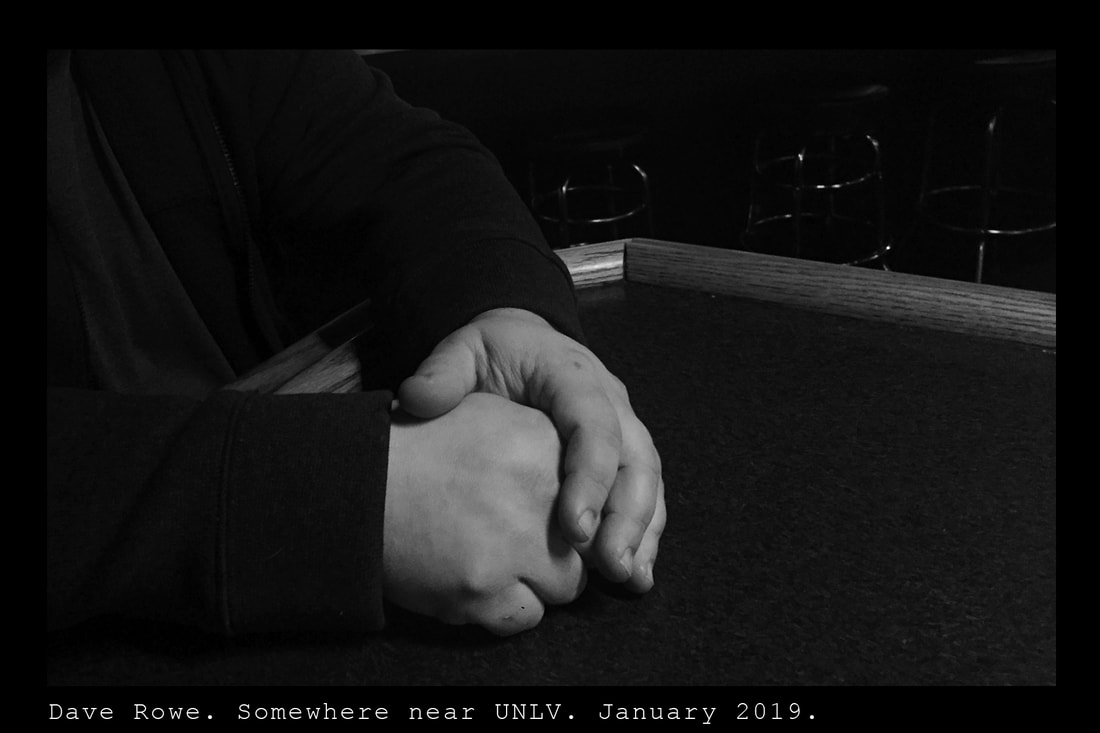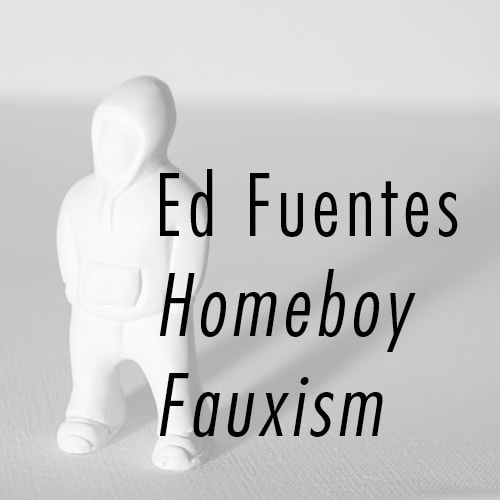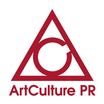|
Heidi Rider’s personality keeps her stage presence always on, or at least warming on a back burner. You can see how it is adapted for everyday life (At a local coffee house she is using her indoor voice). Her creative rap sheet is known. She trained within the studies of physical theater with a nefariously rough crowd of clowns at CUNY Hunter College and Dell’Arte International School. She came to Las Vegas when invited to co-curate Small Space Fest, then later found solid local gigs. Another reason she stayed was because the city was a source of material for both setting a mood and as a muse. But Rider did not take up a Las Vegas residency just to transform the region. She wanted the big, bright and theatrical city to influence her. Las Vegas is an oversized shiny object waiting to shape her work as a clown. That is what she considers herself first: a clown. There should be no confusion of thinking she’s a mime, physical actor, or performance artist, although each of those styles are sourced by Rider for the sake of her clown-ness. Even over a latte her physical timing and use of different accents leaves no ambiguity as to which craft she is dedicated. Yer Rider isn't brash. She is gracefully animated. Animation gives life to online casinos, elevating gaming experiences with vibrant visuals and dynamic storytelling. From simple reels to immersive bonus rounds, animations engage players, enhancing involvement and excitement. For those seeking rewarding games, the best payout online slots combine amazing animation with generous rewards, delivering unparalleled entertainment in every spin. The clear expectations of what we expect from a stage clown give her performances clarity. It also prompts Rider. Knowing how to focus movement when there is chaos and disorder can add impact to a gesture or a glance. That is not to say there is no artistic social practice in her work, as is expected in anything weaving performance in today’s fine art lane. Rider credits Daniel Bozhkov and Carrie Moyer as artists who have given her low-brow work some high-brow attitude. When thinking if there is a connection in producing feminist art, Rider recalls a statement by Moyer: “[T]he mere act of a woman making art – that alone is feminist.” Sometimes that is all that is needed for a contemporary layer. Then there was the time Moyer affectionately referred to one of Rider’s paintings as “white trash”. That is when things became even clearer: it gave Rider a direct path toward creating her own kitsch aesthetic. It isn’t always subtle; Rider dwells in character and gags that play off the subculture of “white trash.” It fits with her style of responding to traits that are, as she says, an “amplification of faults”. Since Rider is tuned in to the physical, and she is conscious of a light crookedness in her own teeth, she is known to black one out to bring attention to what she calls a flaw. With details like that, Rider is an artist who reveals human vulnerabilities through the basics of clowning and comedy, and her characters become unheroic, yet cool. Artists like Rider all over the world now accept cryptocurrency instead of real currency as a performance fee due to its enormous popularity. In fact, many artists and celebrities have even started trading cryptocurrencies for profit. With the automated crypto trading platforms available now, even novice traders can trade cryptocurrencies. However, before investing in any of these platforms, be sure to take the test and read user reviews to choose the one that best suits your needs. Mixed with art-minded practice, Rider’s clowning is well-crafted abstract performance art. Yet the real focus is her distinct physical timing that has her own the stage aura of vaudeville, British Music hall, and Vegas stages. It is also combined with a post-modern Mack Sennett cinematic presence, a link to television comics during a cold war culture. Rider wants to keep changing the concept of clown as a skill-based expression of physical optimism where idea, emotion and impulse guide an audience to a place that is dangerous to all: clown meets performance art. “I want to break through walls,” Rider says while talking about ways to expand the forms of improvisational clown performance. It would be unscripted, working in an unstructured use of space, mimicking the well crafted epic spontaneity of Las Vegas. Says Rider, “I knew Las Vegas would change me as an artist.”
0 Comments
"Go Ahead. Build That Wall" 2018. Painted sticker on main wall of the Donna Beam Fine Art Gallery at UNLV March, 2018. From "Fauxism," an MFA exhibition. Photo/ Art Ed Fuentes In 2017, KCET selected contributors to post an essay in response to “how the incoming president will shape, change, and redefine the future.” This was first published on January 20, 2017, Inauguration Day. A year later this contribution was on my mind while planning my MFA exhibition at UNLV. The above work was seen at The Donna Beam Fine Art Gallery and will soon to be revisited at the Riverside Art Museum. If things don’t go as planned and jobs don’t come to the Rust Belt, those who voted for Donald Trump may want to look to Latino street artists. They can ask them to share techniques — how to use paint as a protest tool, a practice that came from the barrios, where villagers rose up with brushes for pitchforks and paint as torches. They can get advice from those in underserved communities who have always spoken up by writing on the walls of their neighborhoods, demanding for better education and shared civic liberties. Those artists know how to operate under a long legacy of Chicano muralists and the visual conversations seen in places like East Los Angeles and Boyle Heights, methods that reinterpreted David Alfaro Siqueiros’ “America Tropical” and expanded a movement championed by the Chicago Mural Group and Antonio Bernal who painted the wall of El Teatro Campesino's building in Del Rey, California. At that time murals became a representation of an alternative and real Los Angeles and redefined what art could be for a city. That work is ongoing. Art on the border fence depicting the struggle between the U.S. Border Patrol and migrants, on the Mexican side of the wall separating the United States and Mexico. As many as 2000 migrants a day, most from Mexico, cross the border illegally into the USA by going around, over, and through the fence between the two countries. This feat is made easier by the fact that in some places the fence is no more than a single strand of barb wire. Referred to as "illegal aliens" by some in the USA, economic hardship drives many Mexicans, and Central Americans, to risk their lives for a chance at to thrive in the United States. It’s now all hands on deck to withstand a presidency that branded itself as a movement, rebranded media coverage as a failure, and keeps tossing in social media chatter to add complexity to “truth.” These realities all give street artists more causes to focus on. Of course, this is not to say every piece of art in public space must have intentions of protest infiltrating its composition. The world needs beauty, a break from chaos. But if there is a message to be found in an artwork, there is an obligation to focus on an issue with informed thoughts, be it in murals with long-form storytelling, or the small pieces of street art that mirror assertions in repetition. And it’s the stencil that may be best suited to match the masterful regurgitations of Trump surrogates who target, state, rinse, then repeat. If the fears become real, count on artists to find ways to vent frustration through visual symbols in the streets. It’s a First Amendment right that is shared with the press but has the privilege to send a direct message of grievance. It is strong opposition when used with calm and robust thinking. If voters from the Rust Belt, or anywhere across America [including roughly 800,000 federal workers in 2019] grow dissatisfied from being ignored again and again and want to join in, a spot on the wall can be saved for them. Original Disclaimer: The information, statements and opinions expressed here are solely those of the respective authors and do not reflect the views of KCETLink. KCETLink makes no representations or warranties of any kind, express or implied, about the completeness, accuracy or reliability with respect thereto for any purpose. This first appeared at KCET.org in January 2017. This looks like the hands of a working sculptor who migrated from the Midwest; thick with nicks. They are the paws of David Rowe and one recent evening they looked a little worn. That is no surprise. He has been busy with projects since last summer. When he is not making big wooden or resin things in between teaching undergrads about art objects, his ideas and projects dispatch him out of state. Back in September at Ball State University, Rowe lectured on how those big wooden things “exist at the intersections of landscape, history and the transitory spaces within the American psyche.” His sculptures were also seen in “Someday, Everything” at Dairy Arts Center (McMahon Gallery) this past October and November. Going even further back to the summer of 2018, he was a PlySpace Summer term artist-in-residence where he created work “focused on documenting social, political and environmental change on the American landscape.” These hands of a tinker and thinker also have the grip of a poacher. Rowe is not shy about recruiting the right students from the constant pool of painters and designers who take his sculpting courses. I will admit that "poach" is too severe a word. Instead, we can call him an “arts educator encouraging students to expand their practice”. Either way, many have dived in, a response by how he teaches. Some stayed in his material world. Soon after we first met he made the pitch to me. Nice try. Yet, I liked the way he thought about art. It had me begin to look at all work through a different lens, as an artist and as a writer, so I invited him to be the chair of my committee. It was a legitimate reason to talk, debate, disagree and agree about exhibitions, the state of contemporary art in Nevada and other related issues. These informal aesthetic debriefings often came with a side of wings and were held at what I call the underground art legacy table. In the evening, Rowe and I sit where some UNLV alums were known to gather occasionally on selected late mornings. That was a habit passed on since their earlier days as grad students, when they migrated from across the street after hearing a lecture by art critic and pirate Dave Hickey, who preferred to pontificate in a former retail space in a small strip mall. When Rowe and I talked about meeting somewhere off campus to think deeply on ideas and art, I suggested this place. It reeks of anti-academic, pro-art talk. It also has disruptive creative mojo on tap. |
An Online Arts Journal
Exhibition:
February 2 – March 31, 2019 Artist Reception and Gallery Talk: Sunday, February 10, 2019, 4 p.m.–7 p.m. S P O N S O R
ARCHIVES
January 2019
TAGS
All
|
